Israel-Hamas War: What happened on Day 93?
Hezbollah claims it hit IDF base • Arab media claims multiple airstrikes in Lebanon
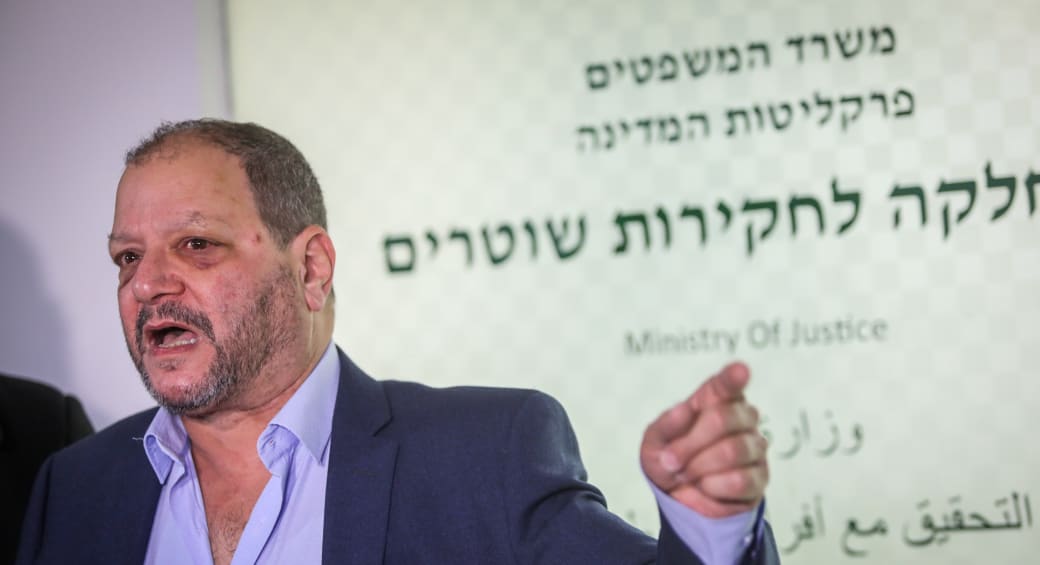

Hamas terrorist leaders may be hiding outside Gaza's Khan Yunis - sources
For months, all top IDF and defense officials said that most or all of the hostages and Hamas high command had fled to southern Gaza.

Despite months of saying that all of the Hamas leaders are in Khan Yunis in southern Gaza, some may be in central Gaza, the Jerusalem Post has learned.
Generally before October 7, Hamas’s “civilian” functions leadership, such as Yahya Sinwar’s apparatus for governing the Gaza Strip, was in Gaza City in northern Gaza.
There was also a military quarter in Gaza City where Hamas military chief Muhammad Deif spent time.
However, either in preparation for the October 7 invasion, around the time of the IDF invasion of October 25-27, or at the latest, once they saw that the IDF was invading for real and routing Hamas forces, the Hamas leadership fled in a southern direction from Gaza City.
For months, all top IDF and defense officials said that most or all of the hostages and Hamas high command had fled to southern Gaza, most likely to Khan Yunis.
Incorrect predictions of Hamas leaders hiding places
There were already holes in some of these predictions when it turned out during the ceasefire week that Hamas was holding hostages in Shejaia.
Between December 10-18, the IDF learned that a second set of hostages had also been held in Shejaia, which the IDF mistakenly killed, thinking they were terrorists.
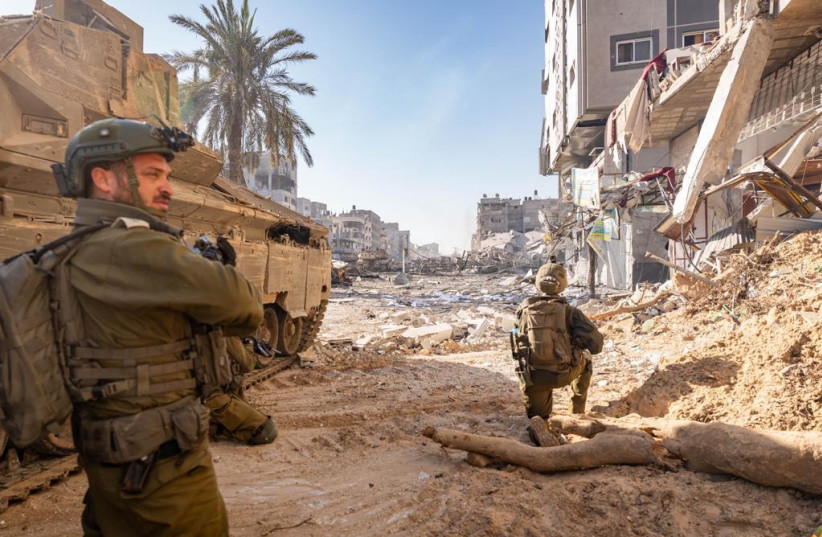
In a partial explanation of the mistaken killing incident, top IDF officials said they had not fully trained Shejaia regular soldiers for the possibility of running into hostages. This second incident was the strongest testament to how convinced the IDF was at some point that all the hostages and Hamas leadership were in southern Gaza.
In addition, in early December, the IDF for the first time started to invade portions of central Gaza. However, a more aggressive invasion of central Gaza did not start until weeks later.
The Post can now reveal that portions of Hamas’s top leadership may be in central Gaza with hostages, and not only in southern Gaza in Khan Yunis, which was “the party line” for the defense establishment for a couple of months.
Given that central Gaza was one of the last pieces of the Strip on the IDF’s radar screen, there are now questions about whether the IDF missed the idea that some top Hamas leaders and some hostages might be in central Gaza or whether it was known, but kept under wraps, to focus on northern Gaza and then Khan Yunis.
The theory that the IDF missed central Gaza’s importance would raise questions about whether its other estimates about the Hamas leadership locations are correct.
The theory that the IDF knew, but kept the focus on southern Gaza could have been an attempt to catch any Hamas top leaders with hostages in central Gaza by surprise.
In fact, there was a period of days when IDF sources had told the Post and other media that there were hostages in central Gaza where the Israeli censor temporarily blocked publication.
Go to the full article >>Six Palestinians killed in Israeli airstrike in Jenin - report
Palestinian terrorists set off explosives and fired heavily at the Israeli forces operating in Jenin overnight.
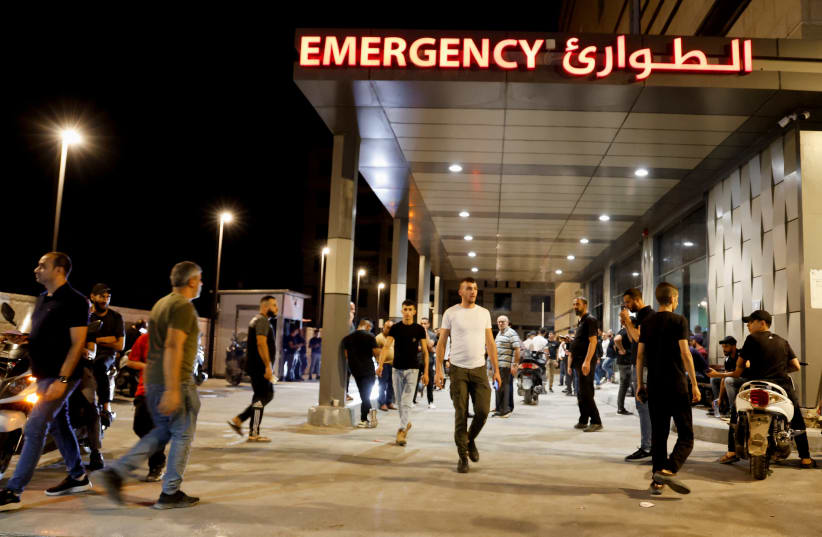
At least six Palestinians were killed in an Israeli airstrike in Jenin early Sunday morning, amid intense clashes between Israeli forces and Palestinian terrorists in the West Bank city, according to Palestinian reports.
فيديو| تغطية صحفية: لحظة تـفـجـيـر عـبـوة ثانية بالتزامن مع إطـلاق نـار كثيف تجاه قـوات الاحـتـلال في جنين. pic.twitter.com/kZ168uQQz2
— شبكة قدس الإخبارية (@qudsn) January 6, 2024
Clashes erupted as Israeli forces entered the city on Saturday night, with Palestinian terrorists setting off explosives and firing heavily at the Israeli forces.
Helicopters and drones were spotted over the city during the clashes, according to Palestinian reports.
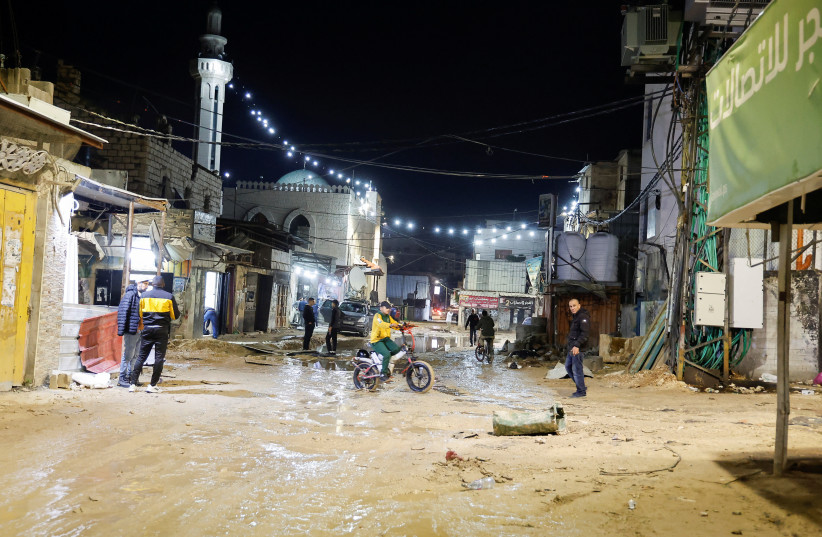
Raids reported throughout West Bank
Raids by Israeli forces were also reported in Nablus and Kalkilya overnight, according to Palestinian media. Armed clashes erupted in Nablus amid the raid in the city.
Israeli forces have conducted repeated operations in Jenin since the outbreak of the war with Hamas, conducting several airstrikes targeting terrorists in the city in some of the raids.
Go to the full article >>IDF found cages in Gaza where Hamas supposedly kept hostages - KAN
The cages were also used to transport hostages from place to place.
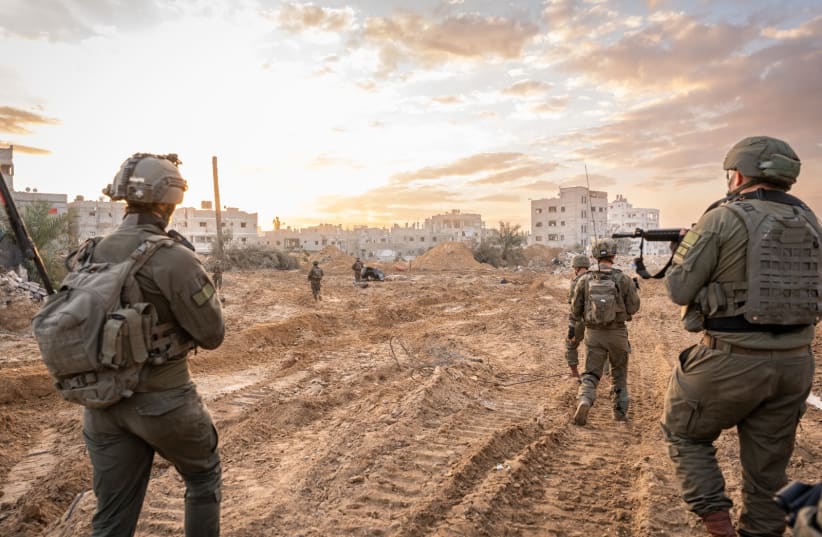
The IDF found cages in Gaza which the Hamas terrorist organization seemingly built to hold the hostages they kidnapped on October 7, KAN reported on Saturday.
This is consistent with intel collected in the field indicating that the cages were used by the terrorists not just to hold hostages, but also to move them from place to place within the Strip.
They are also the same cages Hamas uses for its own prisoners.
פרסום ראשון: לוחמי צה"ל איתרו במהלך סריקות בעזה כלובים שככל הנראה שימשו את חמאס להחזיק חטופים | @ItayBlumental עם הפרטים#חדשותהשבת pic.twitter.com/W0t8tJxEt7
— כאן חדשות (@kann_news) January 6, 2024
Recent updates into the war
Last week, IDF soldiers took over the intelligence and strategy stronghold of Hamas in Gaza City. The forces carried out a targeted raid on the central building of the "Mizrahi Outpost," where the stronghold they took over included 37 buildings and was located within civilian areas in the vicinity of residential buildings, schools, and hospitals.
In addition, the Israeli forces uncovered operation rooms and an underground control bunker, from which the organization's commanders conducted the fighting in the Gaza Strip. The underground complex is at a depth of about 20 meters and includes long-term living spaces belonging to senior Hamas officials. Many weapons were also found. In the area of the outpost, the soldiers located five central shafts tens of meters deep, which are connected to each other, creating an extensive tunnel route.
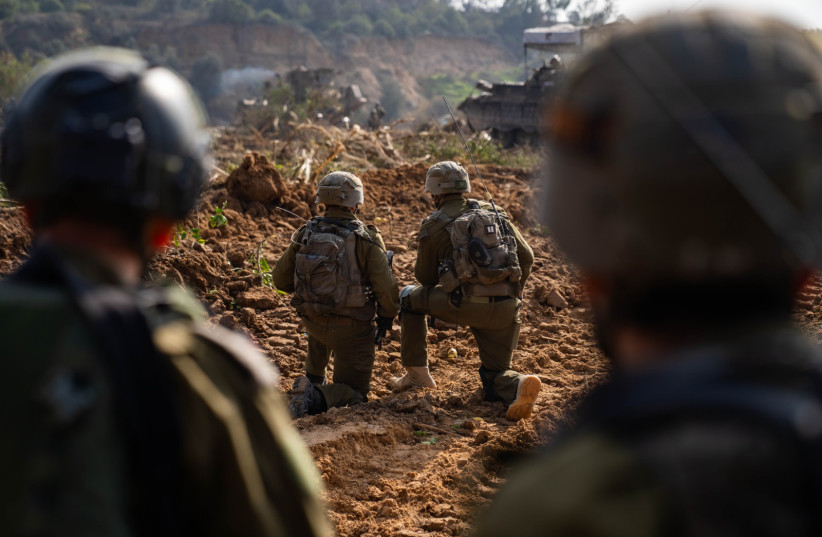
Furthermore, also on Saturday, IDF spokesman Rear Admiral Daniel Hagari revealed a new and up-to-date photo of Hamas military chief Muhammad Deif.
The photo shows him holding a stack of US dollars and a plastic cup of juice.
Gadi Zaig contributed to this report.
Go to the full article >>Blinken, Borrell call for diplomatic solution to Israeli-Hezbollah conflict
Israel is “clearly not interested and does not want escalation. That has been made clear from the start,” Blinken said.
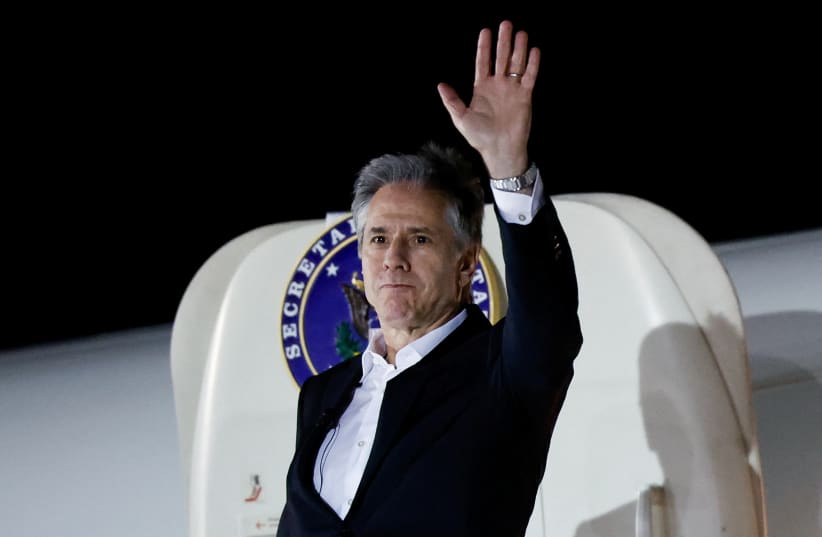
Evacuated Israelis must be able to return to their homes on the country’s northern border, US Secretary of State Antony Blinken said on Saturday night as he called for a diplomatic solution to the conflict with Hezbollah.
“It is very important that Israelis have security in the North,” Blinken said as he wrapped up a trip to Turkey and Greece and prepared to head for what he said is his fourth tour of the Middle East since Hamas attacked Israel on October 7. It will include stops in Jordan, Qatar, the United Arab Emirates, Saudi Arabia, Israel and Egypt.
Blinken’s trip is focused on the Gaza war, freeing the hostages held there, and preventing an all-out war between Israel and Lebanon’s Hezbollah.
“We have an intense focus on preventing this conflict from spreading,” he said, as he noted, in particular, the plight of Israelis who had been evacuated from their homes on the northern border 90 days ago at the start of the Israel-Hamas war.
“Tens of thousands of people have been forced from their homes in northern Israel because of the threat posed by Hezbollah,” Blinken said.

“We are looking at ways – diplomatically – to try and defuse that tension so that people can return to their homes; so they can live in peace and security. This is something that we are actively working on,” he said.
The desires and needs of Israel
Israel is “clearly not interested and does not want escalation. That has been made clear from the start,” Blinken said, adding, “but they have to be prepared to defend themselves and defend their rights to live in their own country.”
He said that “from Lebanon’s perspective it is not in the interest of Lebanon to see any escalation. So the question is in large part Hezbollah and what actions it will take” and how countries with ties to Hezbollah can use their influence to calm the situation. “For us, to use our own diplomacy to see if we can find a way to produce some more sustained calm in northern Israel and southern Lebanon.”
Blinken’s expected trip to Israel this week follows a visit to Israel on Thursday by US special envoy Amos Hochstein.
Prime Minister Benjamin Netanyahu told Hochstein on Thursday that Israel is committed to bringing about a fundamental change on its border with Lebanon, according to a statement from his office. Defense Minister Yoav Gallant told Hochstein that the window for diplomacy was closing.
As part of the diplomatic blitz expected this week, German Foreign Minister Annalena Baerbock will visit Israel and Lebanon.
Counselor of the US Department of State Derek Chollet and Assistant Secretary for Near Eastern Affairs Barbara Leaf will also be in the region this week, visiting Jordan and Israel.
European Union foreign policy chief Josep Borrell visited Lebanon on Saturday and called for a diplomatic solution, including the implementation of UN Security Council 1701, which set out the ceasefire terms that ended the Second Lebanon War. That resolution mandates that the only armed group that can exist on Israel’s border is the Lebanese army and not a non-state actor such as Hezbollah.
“I think that the war can be prevented, has to be avoided, and diplomacy can prevail to look for a better solution,” Borrell said during a joint press conference with Lebanese Foreign Minister Abdallah Bou Habib.
“It is imperative to avoid a regional escalation in the Middle East, it is absolutely necessary to avoid Lebanon being dragged into a regional conflict. This is the last thing Lebanon needs,” Borrell stated.
“More than 70,000 civilians have already been displaced in Lebanon, 200,000 in northern Israel. Almost 50,000 olive trees have been burnt on the border,” he explained.
“Nobody stands to gain from a regional conflict,” Borrell said, adding that he was directing this message to both Israel and Hezbollah.
“Diplomatic channels have to be open to signal that the war is not the only option, is the worst option, and to keep working on a diplomatic solution,” he said during a joint press conference with Lebanese caretaker Foreign Minister Abdallah Bou Habib.
Lebanon is committed to de-escalating the situation Habib said – and wants to see the full implementation of Resolution 1701. He cautioned, however, that “the only political solution that will put an end to the conflict in the Middle East is to end the Palestinian conflict.”
The IDF said Saturday that 40 “launches” from Lebanon toward the area of Meron were identified. There were no reports of casualties or damage. Hezbollah said it had hit a key Israeli observation post with 62 rockets as a “preliminary response” to the killing of Hamas deputy chief Saleh al-Arouri on Tuesday.
Tensions have been especially high in the area since Arouri was killed by a drone in the southern suburbs of Beirut – a stronghold of Hamas’s Lebanese ally Hezbollah – in an attack widely attributed to Israel.
On Saturday night, Netanyahu issued a video statement expressing his determination to destroy Hamas.
“Three months ago, Hamas committed a terrible massacre against us. My government directed the IDF to go to war to eliminate Hamas, return our hostages, and ensure that Gaza will never again be a threat to Israel. The war must not be stopped until we achieve all of the goals. We will not give Hamas any immunity whatsoever, and we will fight until we restore security in both the South and the North,” Netanyahu stated.
Reuters contributed to this report.
Go to the full article >>Netanyahu urges political unity after political uproar in cabinet
On Friday Minister Benny Gantz (National Unity) said that the heated exchange which occurred at the diplomatic-security cabinet “was a politically motivated attack in the middle of a war"
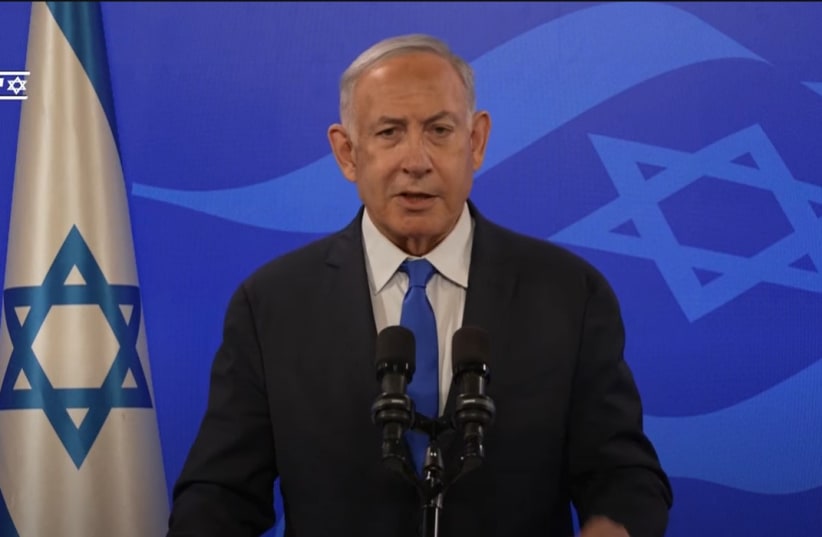
Prime Minister Benjamin Netanyahu urged political unity on Saturday night, two days after a late-night cabinet meeting ended in a bitter dispute was leaked to the media and the opposition called for the collapse of the government.
“Everything must be put aside and we must continue with united forces until absolute victory is achieved,” Netanyahu said in a video message in which he vowed to destroy Hamas.
He did not mention the heated cabinet debate, which captured media attention for the last two days, but his words were seen as a direct response to the political dispute over the composition of an internal IDF investigation into security failures contributing to the October 7 massacre.
A number of those who participated in the meeting, including Transportation Minister Miri Regev (Likud) and Public Security Minister Itamar Ben-Gvir grilled IDF Chief-of-Staff Herzl Halevi on the matter.
On Friday Minister Benny Gantz (National Unity) said that the heated exchange which occurred at the diplomatic-security cabinet on Thursday night “was a politically motivated attack in the middle of a war. I have participated in many cabinet meetings - such conduct has never occurred, and must not occur.”
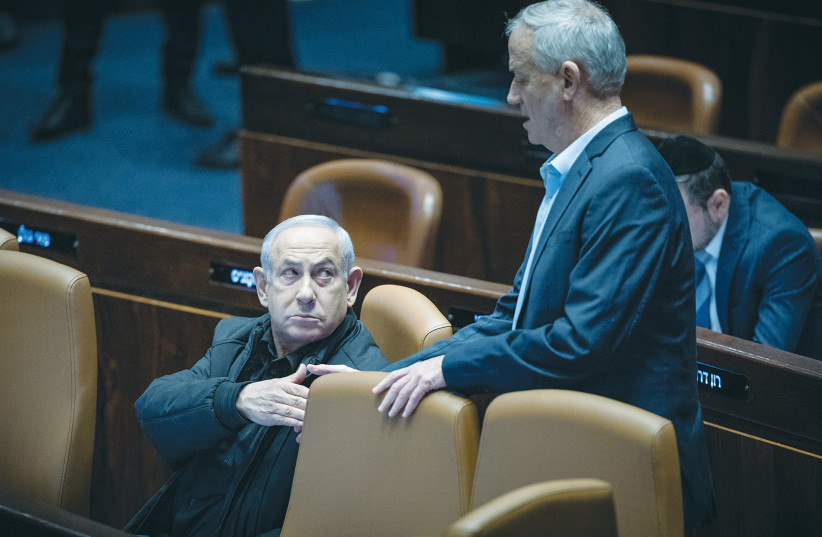
He blamed Netanyahu for the outburst. “Yesterday, the cabinet should have discussed strategic processes that will affect the continuation of the campaign and our security in the future. It did not happen, and the prime minister is responsible for that.
״He has the responsibility to correct and to choose - between unity and security and between politics. If what is important now is security and unity, we must hold the essential discussion for the continuation of the fighting and as soon as possible,” Gantz stated.
Likud's claims on Gantz's goals
The Likud charged in response that Gantz was looking for a reason to exit the national-unity government which he had joined solely due to the war.
Gantz has been Netanyahu’s main political rival and has been leading in all political polls, showing that if elections were held now, he could receive 38 seats and would be able to form a government.
The Likud on Friday shot back at Gantz, stating, that cabinet members had a responsibility to ask questions and doing so was not political.
“During a war, when the people are united, Gantz is expected to act responsibly and stop looking for excuses to break his promise to remain in the unity government until the end of the war,” the Likud said.
Defense Minister Yoav Gallant issued a statement of support for Halevi, stating that it was important to keep the army out of any political debate.
“I appeal to all members of the public to stop irresponsibly using the IDF and its commanders for political gain,” he said.
Others saw the fact that the debate was leaked from a meeting that was supposed to be secret as a sign that Netanyahu was not capable of holding high-level security conversions.
Opposition leader Yair Lapid, a former prime minister and former foreign minister, said that the leaks were proof that this government needed to be replaced, even while the war was ongoing.
“The leaks from the cabinet [Thursday] night are a disgrace and further proof that this cabinet is dangerous. The State of Israel must replace the government and its leader. These people are not worthy of the sacrifice and heroism of IDF men and women and will not be able to make strategic decisions. They have to go now.”
Labor Party leader Merav Michaeli issued a similar statement.
“Every minute that these people make decisions about our lives endangers life and limb,” she said.
The chief of staff and senior IDF officers are battling a hostile government that is fighting them, instead of focusing on eliminating Hamas.
“Once again, it is clear how dangerous Netanyahu is for Israel and how urgent it is to replace him immediately,” Michaeli said. “This time, you won’t be able to escape,” she added.
The meeting had dealt with Day After plans for Gaza in advance of US Secretary of State Antony Blinken’s anticipated visit to Israel this week.
In an interview with Channel 12 on Saturday night, Regev said she had received information about the creation of the internal IDF investigatory committee and quizzed Halevi about the matter.
Ministers have a responsibility to ask hard questions and should not be taken to task for doing so, she told Channel 12, explaining that this was good governance and not politics.
Finance Minister Bezalel Smotrich (Religious Zionist Party) took issue with reports that the meeting ended prematurely due to the heated exchange, explaining that it had already been scheduled to end at midnight.
“The meeting didn’t explode, the prime minister had said it would end – from the start – at midnight,” Smotrich stated.
At issue was opposition to an IDF plan for an internal investigatory committee that would include former defense minister and former IDF chief-of-staff Shaul Mofaz, IDF intelligence chief Maj.-Gen. Aharon Zeevi Farkash, and former IDF southern command chief Sami Turgeman.
The committee would be tasked with investigating the military failures that contributed to the Hamas-led October 7 attack, in which over 1.200 people were killed and another 250 were taken hostage.
The results of the committee were intended for internal use, to immediately improve flaws in IDF operations moving forward, and were not expected to constitute a formal investigatory committee.
Regev told Channel 12 she believed that the scope of the investigation was broader and should be handled by a national investigatory committee after the war.
Some of the ministers in the meeting were upset that Mofaz and Farkash were part of the team. Both men had held top military roles during the 2005 disengagement from Gaza and in the lead-up to the Second Lebanon War.
Among those who spoke out were National Public Security Minister Itamar Ben-Gvir (Otzma Yehudit) and Transportation Minister Miri Regev (Likud).
AFTER THE meeting Ben-Gvir said that "appointing Mofaz" was "adding insult to injury." He said Mofaz was “one of the main architects of the [damaging] disengagement, who is a political figure, and above all, was an essential partner in the [strategic] construction that brought us to this point.”
He added, “Given that any investigation must also include examining decisions around disengagement, its architect can’t be part of the investigatory process.”
Ben-Gvir also took issue with Farkash’s support of those who, during the fierce debate over the judicial reform, said they would refuse to serve in the IDF as a protest move.
Those actions were also “undoubtedly a catalyst for the events of October 7,” Ben-Gvir stated. “These are people whose actions should be investigated rather than being investigators,” he charged.
At one point during the stormy back and forth at the end of the meeting, Gantz defended Halevi and expressed his frustration with Ben-Gvir’s insisting that the strategic concept of disengagement was relevant to this particular issue.
According to Walla, Gantz retorted “This is a professional investigation, what does it have to do with the disengagement and the [strategic] conception? The chief of staff is f***ing conducting an investigation into what happened now, to serve the goals of the war and our ability to prepare for a conflict in the north.”
Go to the full article >>IDF reveals most recent photo of Hamas military chief Muhammad Deif
Hagari also said that "Hamas's military framework in the northern Gaza Strip has been completely dismantled," and that the photo of Deif was found on a computer that was seized in the Strip.
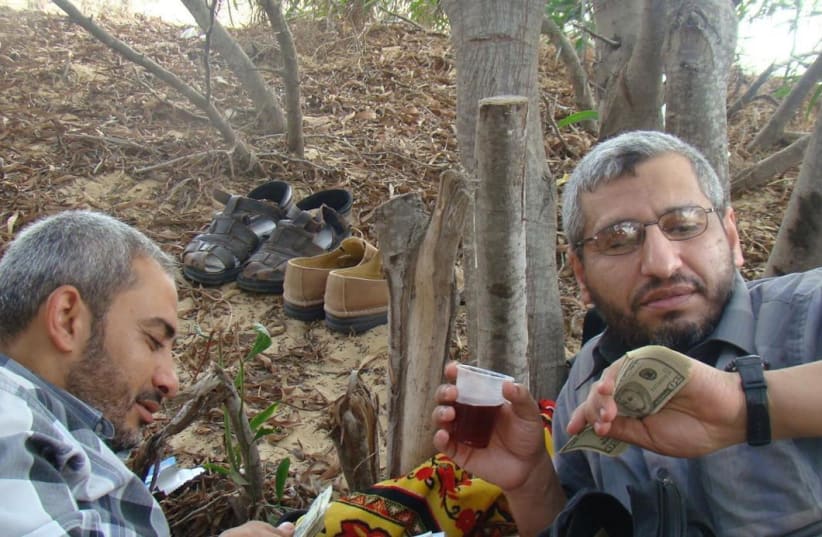
IDF spokesman Rear Admiral Daniel Hagari revealed a new and up-to-date photo of Hamas military chief Muhammad Deif on Saturday. The photo shows him holding a stack of US dollars and a plastic cup of juice.
Recent Israeli intelligence information was received that Deif's physical condition was functioning, and he is functioning well and suffers only from damage to his eye and a slight limp.
Hagari said that the photo of Deif was found on a computer that was seized in Gaza. This was done through intense intelligence gathering by Israeli forces, where over 70 million intelligence files were downloaded from computers seized in Gaza.
"In order to understand the military operation in Gaza, you need to understand Hamas and how it operates. It is built in the framework of battalions and uses a branched underground system. The terrorists move in different areas of the Strip using the infrastructure in a secret manner." He explained that Hamas terrorists move around in the area without weapons, in civilian clothes.
Hamas in Gaza's north "completely dismantled"
Hagari also said that "Hamas's military framework in the northern Gaza Strip has been completely dismantled."
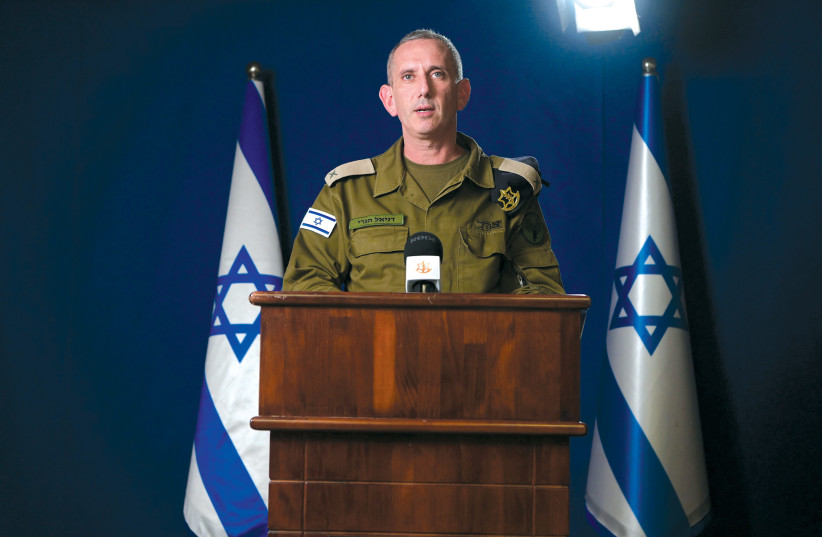
The IDF also killed around 8,000 terrorists in that area, a military spokesperson said.
The military has also seized tens of thousands of weapons and millions of documents in that area, Rear Admiral Daniel Hagari said in an online briefing. "We are now focused on dismantling Hamas in the center of and south of the (Gaza) strip."
Hagari spoke about operations the IDF did in the Jabaliya refugee camp in northern Gaza, where the IDF evacuates the population from the crowded neighborhoods before an attack. After the evacuation of the residents, before the troops enter, the IAF attacks observation posts and infrastructure belonging to Hamas. "We attacked precisely, based on intelligence and according to international law," he said.
Intelligence gathering, such as how the IDF used to download millions of files from computers in Gaza, is only one of many goals that the IDF is using to dismantle Hamas, Hagari said.
Other goals include the elimination of Hamas's command. "The killing of the commanders made it difficult for the terrorists to fight," he said. The second goal is to fight the terrorists themselves by ground forces with air support. "The fight against terrorism is complex, and it exacts heavy prices," Hagari said. "We learn from every incident and try to reduce the number of casualties," Hagari said. "We rescued hundreds of wounded, thanks to which their lives were saved."
Another goal is to locate and destroy rockets and sites where they are produced. 40 thousand rockets have been destroyed, according to him, since the beginning of the war. The last goal is the destruction of the underground infrastructure.
Hagari informed that the IDF learned the lessons from the tragedy in which three hostages were killed by fire from their forces. According to him, "There are still terrorists in Jabaliya, but they are fighting without commanders. There are no shortcuts in the fight against terrorism," he said. He added that an operation similar to the one carried out in Jabaliya is taking place in eight more areas.
Amir Bohbot and Reuters contributed to this report.
Go to the full article >>IDF announces name of fallen soldier

IDF Lt. Col. Roie Yosef Yosef Mordechai, 31, from Tel Aviv, who was also a commander of a group in the Nahal Brigade, was killed in battle in the north Gaza Strip, the IDF announced on Saturday.
Go to the full article >>Drone launched from Yemen shot over southern Red Sea - US Central Command

An uncrewed aerial vehicle launched from Yemen was shot down in self-defense by a US ship in the southern Red Sea on Saturday in the vicinity of several commercial vessels, the US Central Command (CENTCOM) said in a statement.
No casualties or damage were reported, it said.
Go to the full article >>IDF, Shin Bet chiefs visit tunnels in heart of Khan Yunis
New photo of Deif shared; IDF officer killed in fighting; Central Gaza Hamas commander killed
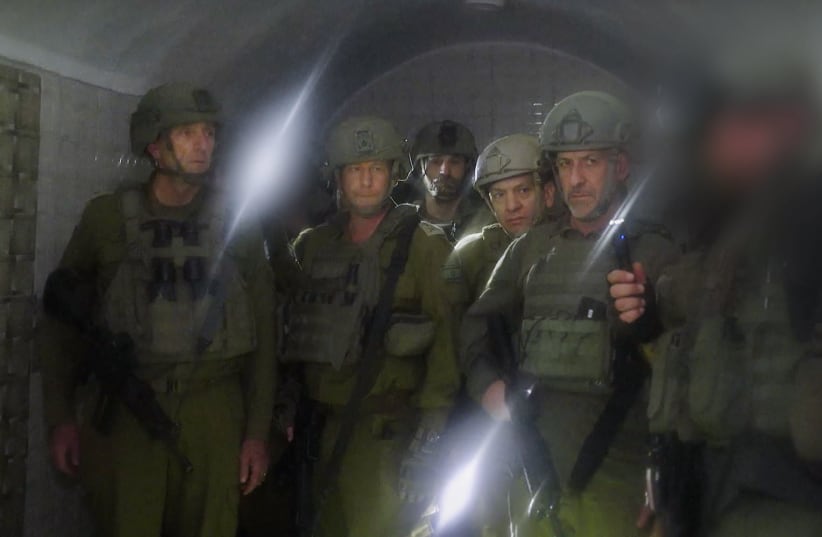
IDF Chief-of-Staff Lt. Gen. Herzi Halevi and Shin Bet (Israel Security Agency) Director Ronen Bar on Saturday visited a Hamas tunnel in the heart of Khan Yunis, signaling Israel’s progress in the fighting in southern Gaza.
Halevi said, “You have a great advantage over those who fight against you. There is no place anywhere in the Gaza Strip where there is a force at your level,” referring to the seven full brigades fighting in Khan Yunis.
The IDF also announced the death of Lt. Col. Roee Mordechai, 31, a commander at the Nahal Brigade’s training base, from Tel Aviv, killed during fighting in the northern Gaza Strip,.
Also on Saturday night, IDF chief spokesman R.-Adm. Daniel Hagari revealed an up-to-date photo of Hamas military chief Muhammad Deif .
The photo, the second to be revealed in recent weeks, shows Deif holding a stack of US dollars and a plastic cup of juice – further confirmation that despite wounds from past IDF assassination attempts, he is in better condition than expected.
Hagari said that “Hamas’s military framework in the northern Gaza Strip has been completely dismantled,” signaling the end of the recent campaign in the Darag – Tuffah area, the last northern Gaza stronghold after Jabalya fell on December 19.
IDF seizes weapons, destroys tunnels throughout Gaza
The military has seized tens of thousands of weapons in that area and millions of documents, Hagari said.
The IDF also announced it had killed Hamas’s Nuseirat Battalion commander Ismail Saraj and his deputy.
The IDF discovered Hamas Nukhba military vests hidden in UNRWA bags stashed in a medical clinic in northern Gaza. The raid was directed by intelligence after Israeli troops came under fire in the area in previous days.
A building next to the raided medical clinic contained RPGs, AK-47s, and ammunition.
Separately, in Khan Yunis, Israeli forces located and destroyed a weapons storage facility containing dozens of Kalashnikov rifles, the IDF added.
Troops, both on the ground and airborne, eliminated many terrorists in the south Gaza area on Friday, the IDF said. A number of tunnel shafts were also uncovered and demolished.
The facility also contained remotely detonated explosive devices, RPGs, and more than 100 ammunition cartridges, the military added.
In Beit Lahiya, northern Gaza, and the neighborhood of Al-Furqan, troops identified drone operators targeting IDF personnel. In response, troops directed UAVs to strike at the terrorists.
Further fights in the north
Later, the IAF fighter jets recently attacked two military compounds belonging to Hezbollah. The compounds constituted significant assets for the organization, including one that was used by the terrorist organization's surface-to-air missile unit.
This was shortly after Israeli forces attacked a series of Hezbollah targets in southern Lebanon, among the targets attacked were infrastructure, a terror squad, a launch position, and an operational headquarters all belonging to the terrorist organization.
During the day, several launches from Lebanese territory towards the areas of Yaftach and Avivib were detected in northern Israel. Also, earlier today, a surface-to-air missile was launched at a remotely manned aircraft of the IAF in Lebanese territory, the vessel was not damaged and continued its mission. The missile did not cross into Israeli territory.
Go to the full article >>Israel-Hamas War: What you need to know
- Hamas launched a massive attack on October 7, with thousands of terrorists infiltrating from the Gaza border and taking some 240 hostages into Gaza
- Over 1,200 Israelis and foreign nationals were murdered, including over 350 in the Re'im music festival and hundreds of Israeli civilians across Gaza border communities